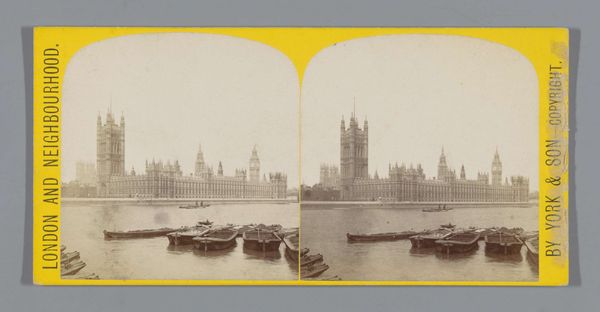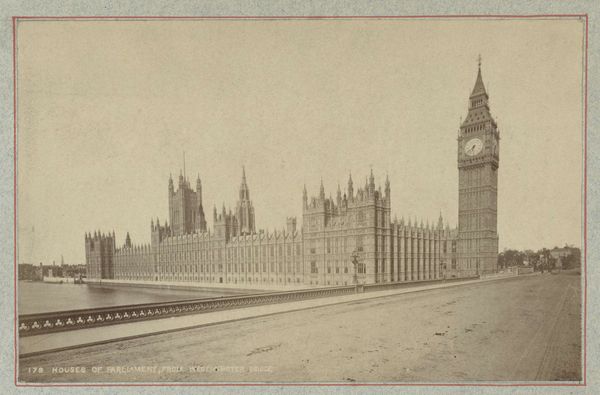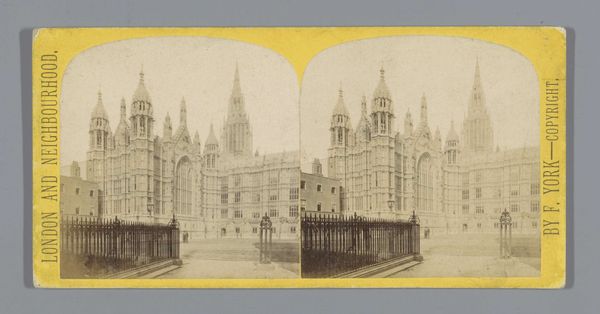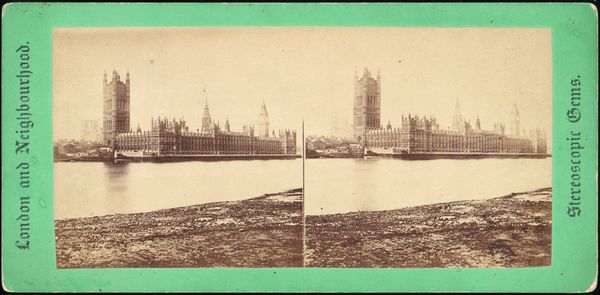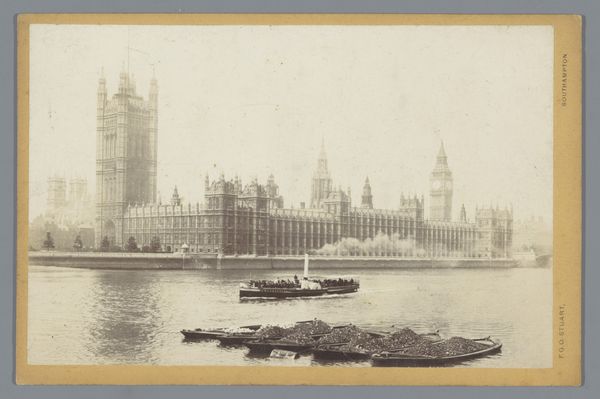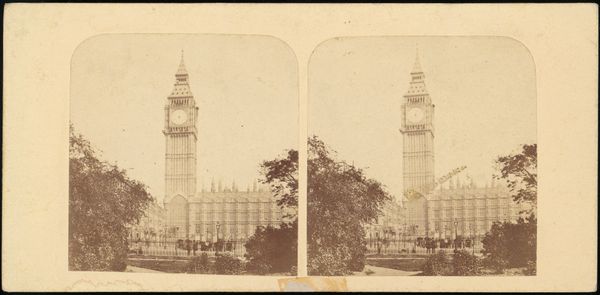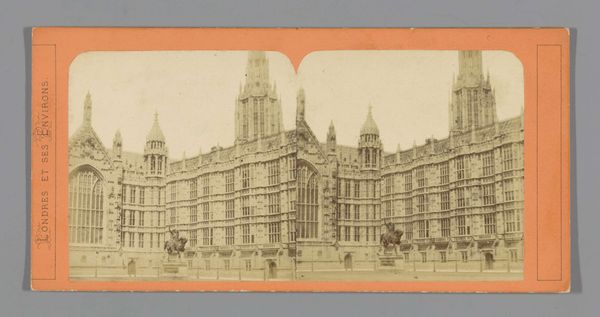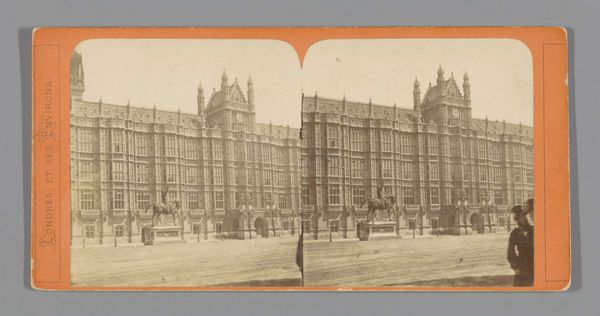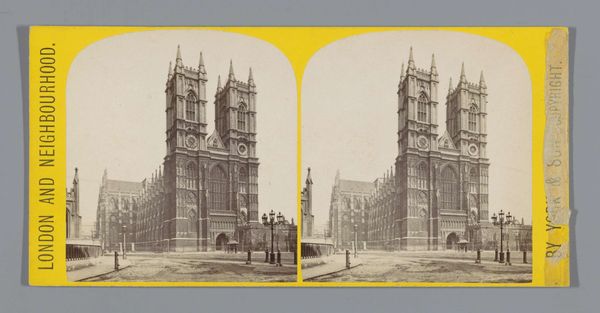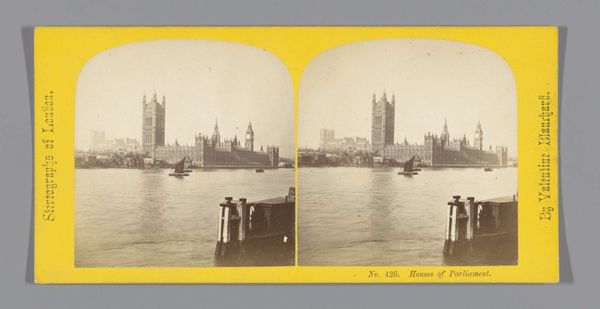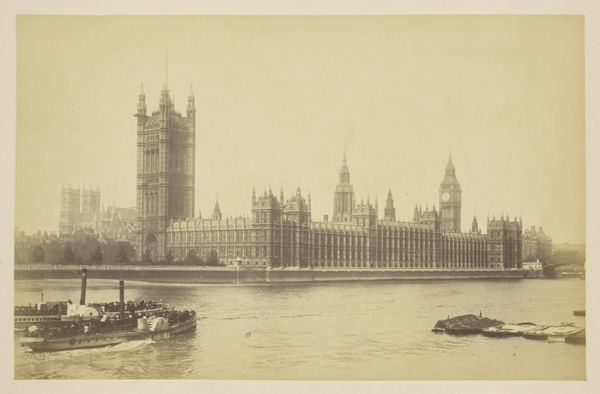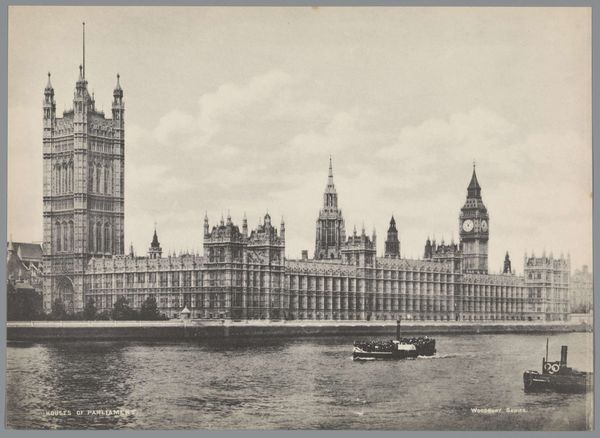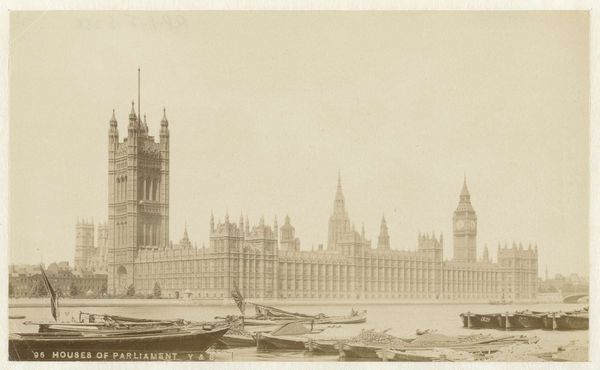
print, photography, gelatin-silver-print, architecture
# print
#
photography
#
gelatin-silver-print
#
cityscape
#
architecture
#
realism
Dimensions: height 85 mm, width 170 mm
Copyright: Rijks Museum: Open Domain
Curator: Immediately, I'm struck by the monumentality despite its somewhat subdued tones. Editor: Indeed. This gelatin silver print, attributed to James Elliott, titled "Gezicht op de Victoria Tower te Londen," dates from around 1850 to 1880. It’s interesting to consider its construction and materiality in that era. The labor involved, from the photographers creating and selling to the people buying. Curator: The historical context is vital here. The tower and, more importantly, what it represents—the British Parliament, the empire—casts a long shadow when considered through postcolonial lenses. Whose stories are privileged here? Who is seen, and who remains invisible within this imperial projection? Editor: The sheer detail the gelatin silver process allowed really spotlights the architecture. It brings attention to the means with which the Tower itself was constructed. Look at all those intricate Gothic Revival details. Someone had to shape that stone, design the facade, erect the building. Curator: Right, and thinking about it that way, who did that shaping? What kind of social strata was working on its creation, while those operating in that very building may not have even realized who put the building together? Editor: And beyond those concerns, which are valid, this is just a stunning work in terms of how it’s made, you know? The way the light renders those architectural details… It speaks to the enduring power of photography to capture the constructed world. You look closely and can just about make out carriages driving about. Curator: Those are telling absences as well. Think about how these early photographs were also used to document colonial spaces, further solidifying the "civilized" vs. "uncivilized" dichotomy, perpetuating power imbalances... I cannot divorce that reading. The photo here acts, unwittingly or not, in continuation of these acts. Editor: Perhaps. Yet, I find a certain fascination in how the architectural material translates into this reproducible medium. Think of all the photographs produced since then… of London! All drawing from similar contexts. Curator: True. And by analyzing its layered significations—social, material, political—it brings us closer to the nexus of art, identity, and power, inviting crucial contemporary dialogues about the complex legacies embedded within such iconic structures and what such a building continues to represent even in the current context. Editor: Indeed. Looking at the material conditions of image-making and this imposing Tower truly reshapes how we understand visual representations.
Comments
No comments
Be the first to comment and join the conversation on the ultimate creative platform.
